Key takeaways
- LinkedIn advertising requires clear targeting and understanding of your audience’s professional needs for effective engagement.
- Choosing the right ad format (e.g., Sponsored Content, Message Ads) is essential to align with campaign goals and resonate with users.
- Monitoring performance metrics and continuously optimizing ads can significantly enhance campaign results and ROI.
- Personalized messaging and setting realistic goals can lead to better engagement and successful outcomes on the platform.
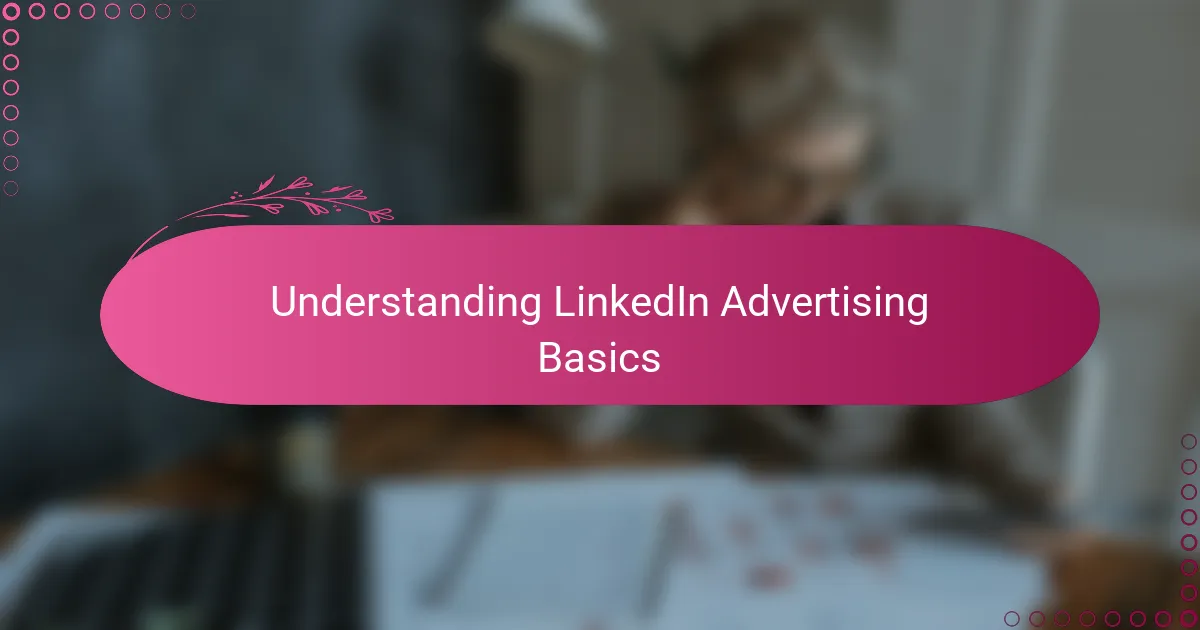
Understanding LinkedIn Advertising Basics
When I first dove into LinkedIn advertising, I quickly realized it wasn’t just another social media platform—it’s a unique professional environment. Unlike Facebook or Instagram, LinkedIn connects you directly with decision-makers, which means your ads need to speak with a different kind of authority. Have you ever wondered why some ads feel more genuine and targeted here? That’s because LinkedIn’s audience is looking for value and relevance tied to their careers, not just catchy slogans.
One of the basics that caught me off guard was how precise LinkedIn’s targeting options are. From job titles and company size to industry and skills, the platform lets you zero in on exactly who you want to reach. I found this both exciting and daunting; exciting because the potential for relevance is high, but daunting because it requires a clear understanding of your ideal customer profile. Without that clarity, even the best targeting tools won’t deliver the results you hope for.
Another key insight I discovered was the importance of choosing the right ad format to match your goal. LinkedIn offers Sponsored Content, Message Ads, Text Ads, and Dynamic Ads, each with its own strengths. Early on, I experimented with Sponsored Content and saw better engagement than with text-based ads. It made me realize that understanding these basics isn’t just about knowing what options exist, but how to align them with your campaign’s purpose and audience mindset.
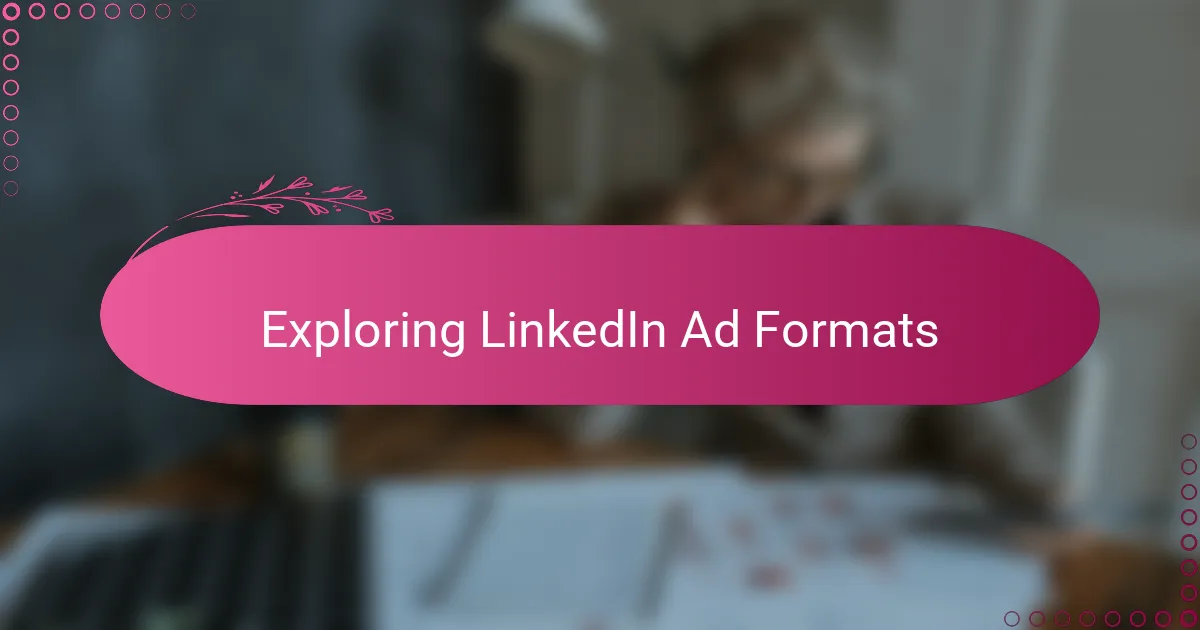
Exploring LinkedIn Ad Formats
Diving deeper into LinkedIn’s ad formats, I quickly learned that each type serves a distinct purpose. Sponsored Content felt like a natural way to blend in—almost like sharing a helpful article rather than pushing a hard sell. It’s no wonder I saw more clicks and interactions there; people on LinkedIn value insights they can apply professionally.
But then I tried Message Ads, and that was a different experience altogether. It felt like reaching out directly to someone’s inbox, which made the interaction more personal but also riskier. I wondered, would recipients find this intrusive or engaging? My takeaway was clear: timing and relevance are everything when using this format.
The variety can be overwhelming at first. Text Ads are simpler and more budget-friendly, while Dynamic Ads personalize visuals based on user data, which impressed me with its precision. It’s fascinating how LinkedIn tailors ad experiences—yet the real challenge lies in deciding which format aligns best with your campaign goals and audience behavior. Have you experimented enough to find your sweet spot? I’m still refining mine.
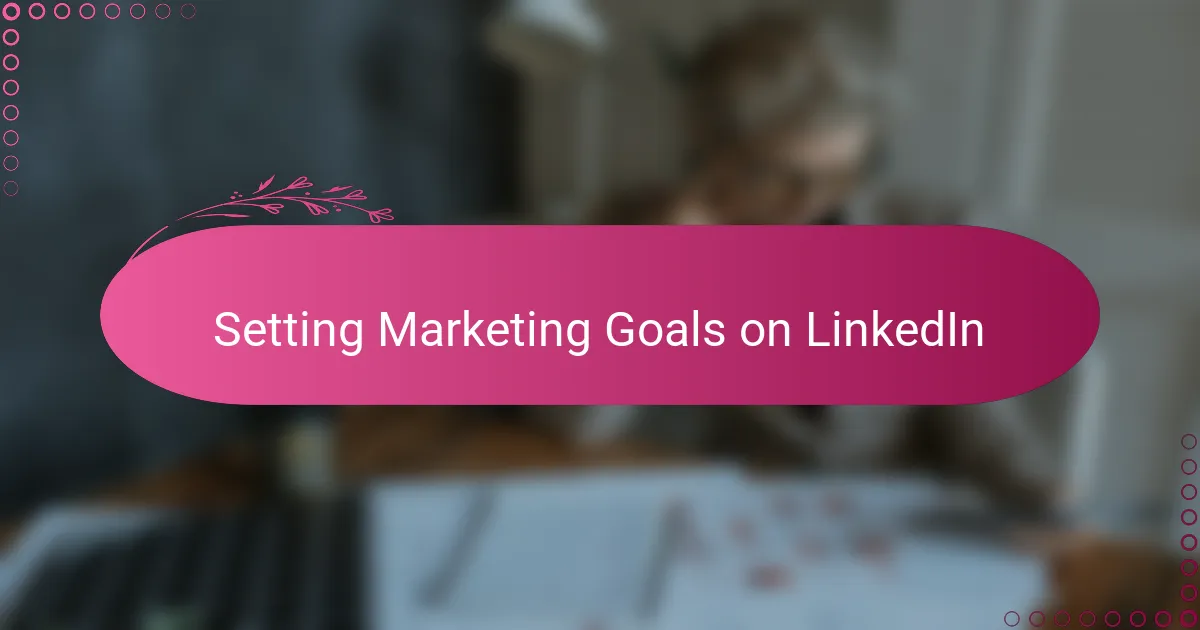
Setting Marketing Goals on LinkedIn
Setting clear marketing goals on LinkedIn became my first critical step. Without pinpointing whether I wanted brand awareness, lead generation, or event attendance, I found my campaigns lacked direction and momentum. Have you ever launched an ad without a solid objective and felt like you were just throwing darts blindfolded? That’s exactly how I initially felt.
I realized that LinkedIn’s professional audience demands purposeful messaging, so my goals needed to reflect real business outcomes, not just vanity metrics like impressions. For example, focusing on quality leads rather than clicks changed how I crafted my ads and where I placed my budget. It taught me that the clarity of your goals directly influences the ad’s effectiveness and ROI.
Sometimes, I struggled to balance ambitious targets with realistic expectations. Setting a goal to connect with C-suite executives in niche industries is daunting but achievable with patience and precise targeting. Have you confronted such challenges? I found breaking down big goals into smaller, measurable milestones helped me stay motivated and track progress meaningfully.
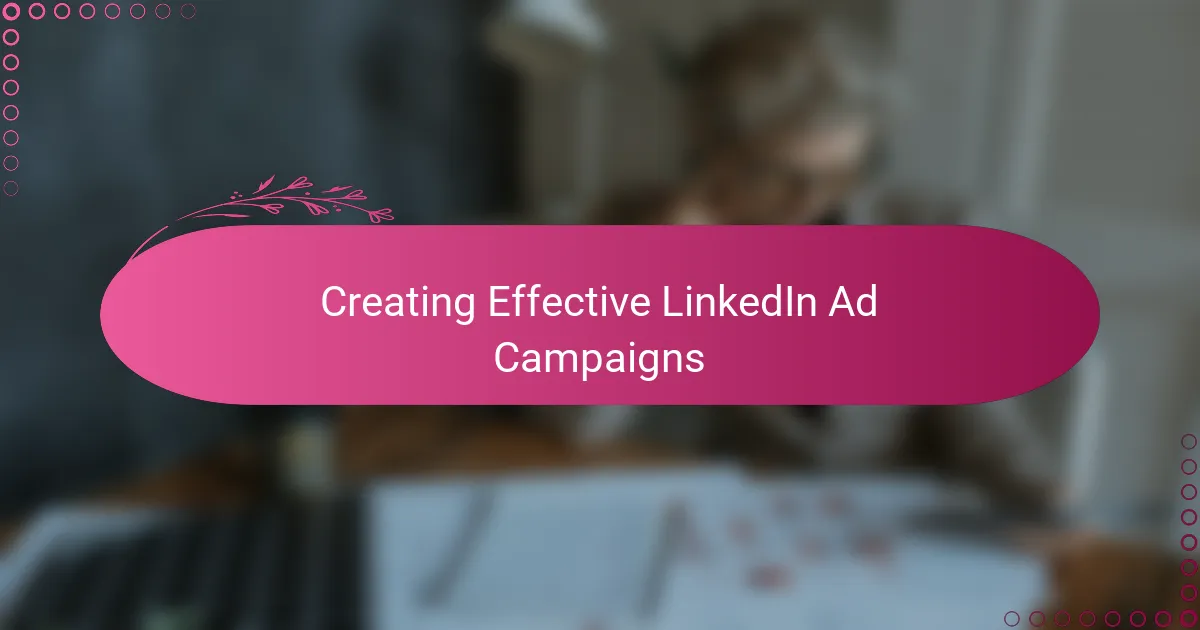
Creating Effective LinkedIn Ad Campaigns
Creating effective LinkedIn ad campaigns hinges on crafting messages that resonate with your audience’s professional mindset. Early on, I learned that generic sales pitches fall flat here—it’s about delivering clear value that aligns with the challenges and aspirations of the people I’m targeting. Have you ever rewritten an ad several times to get the tone just right? That iterative process made all the difference in my engagement rates.
I also discovered the power of testing different creative elements simultaneously. Trying various headlines, images, and call-to-actions helped me identify what sparked genuine interest rather than just clicks. It’s not just about looking good; it’s about triggering conversations and connections that matter. From my experience, patience during this trial-and-error phase pays off in much stronger campaign performance.
Budgets on LinkedIn can feel intimidating, but I found focusing budget spend on the best-performing ads created a smart feedback loop. Instead of spreading resources thin, doubling down on what worked yielded better quality leads and a healthier return on investment. Have you tried scaling this way? It transformed how I approached campaign optimization in a way that felt both strategic and manageable.
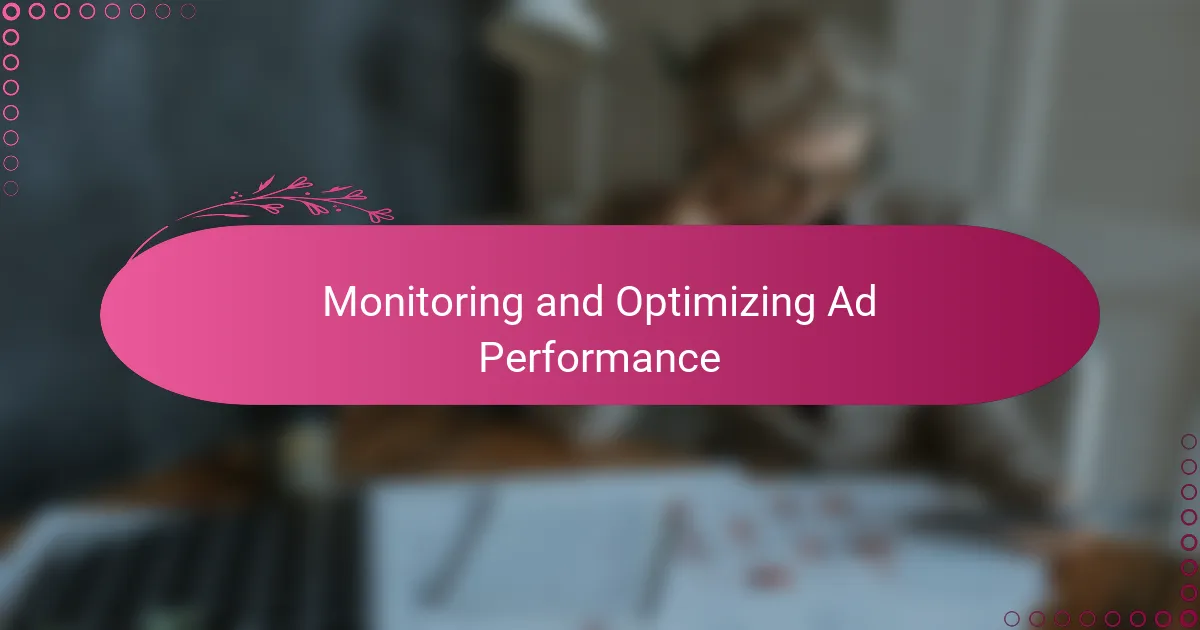
Monitoring and Optimizing Ad Performance
Monitoring ad performance on LinkedIn quickly became my compass for navigating the complex advertising landscape. I learned that regularly checking metrics like click-through rates, conversion rates, and engagement helped me spot what was working—and what wasn’t—before I wasted too much budget. Have you ever felt that sinking feeling realizing your ad is running but delivering zero results? That’s why monitoring is not optional; it’s essential.
Optimization, to me, felt like an ongoing conversation with my audience. When I noticed a Sponsored Content ad underperforming, I didn’t hesitate to tweak the headline or swap the image, then watch closely to see the impact. This hands-on approach made the process less daunting and more dynamic—like adjusting a recipe until it tastes just right. Isn’t it satisfying when you find that perfect combination that suddenly elevates performance?
But beyond changing creatives, I found value in pausing campaigns that dragged and reallocating budgets to high-performers. LinkedIn’s analytics dashboard became my daily ritual, giving me insights into demographics, device usage, and even timing. My advice? Don’t just set it and forget it; let the data guide your decisions, and you’ll feel more confident steering your campaign toward success.
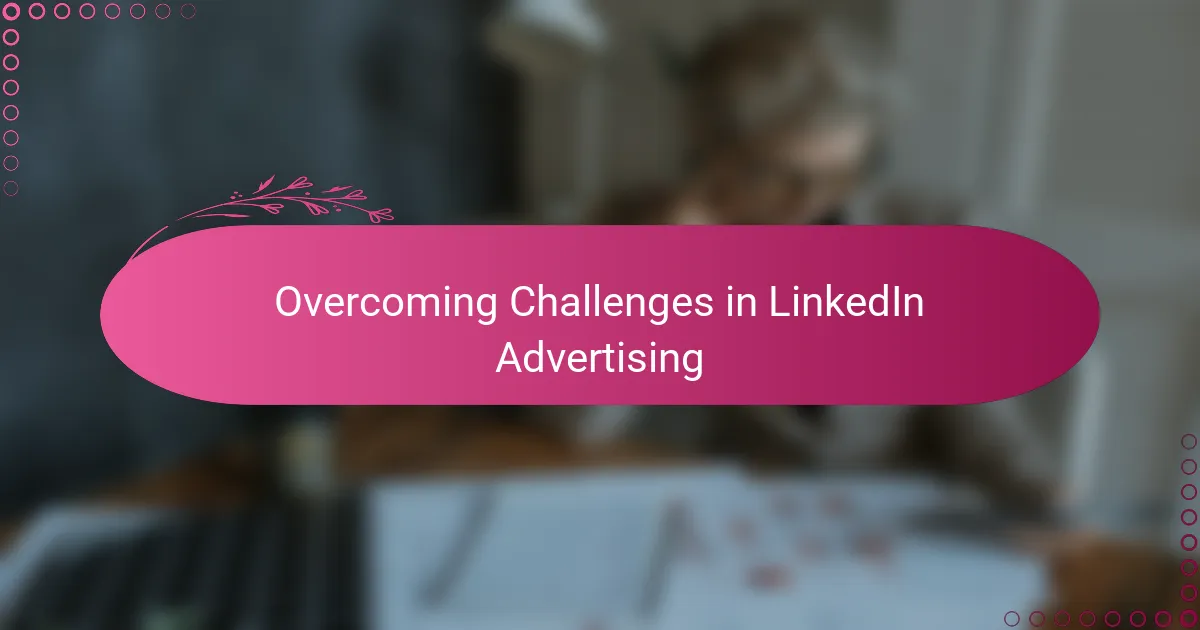
Overcoming Challenges in LinkedIn Advertising
One of the biggest hurdles I faced was mastering LinkedIn’s strict ad approval process. At first, my campaigns kept getting flagged for being too promotional or vague, which was frustrating. Have you ever spent hours crafting an ad only to see it rejected? What helped me was shifting focus from selling to educating—making every word count toward adding real value rather than just pushing a product.
Budget management posed its own challenge. LinkedIn ads can quickly become costly if you’re not careful. I remember launching a campaign without setting daily limits, and watching the spend balloon felt like a punch to the gut. To overcome this, I started setting tighter controls and closely monitoring performance daily, which allowed me to pause underperforming ads before they drained my budget.
Finally, dealing with audience fatigue was something I didn’t anticipate. When I ran similar ads repeatedly, engagement plummeted. It made me rethink how often I should refresh creatives and try new messaging angles. Have you noticed your ad fatigue creeping in? What worked for me was treating LinkedIn ads like conversations—keeping content fresh to maintain interest and respect the audience’s time.
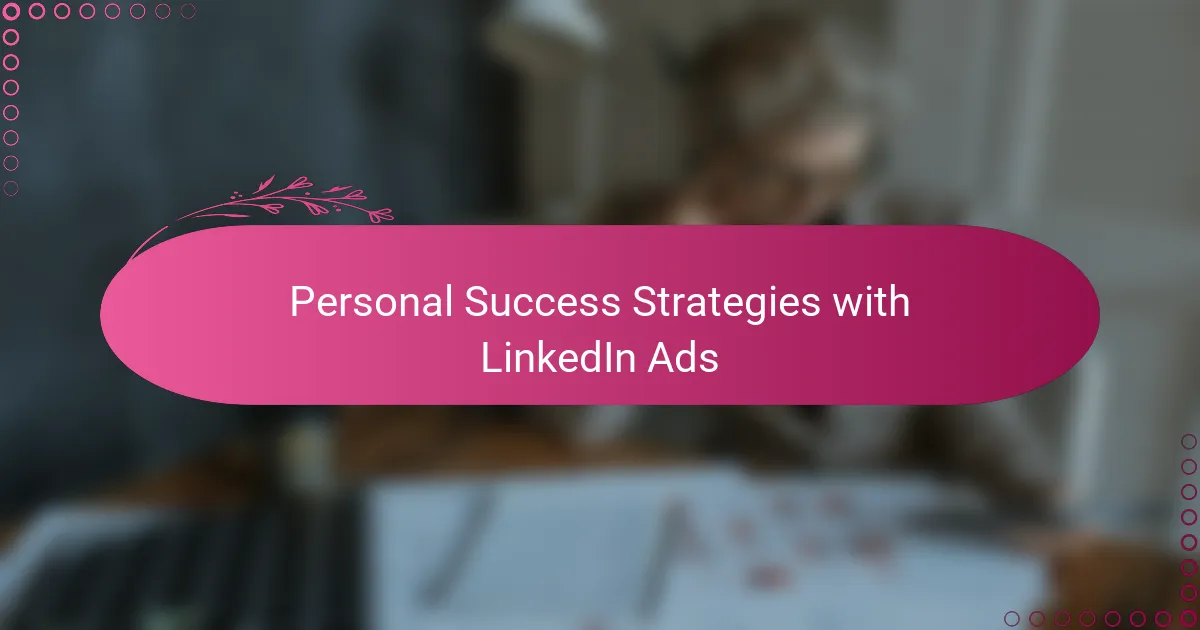
Personal Success Strategies with LinkedIn Ads
One strategy that truly changed my results was embracing the power of LinkedIn’s precise targeting but pairing it with personalized messaging. Instead of blasting generic ads, I crafted content that spoke directly to the needs and pain points of niche professional groups. Have you ever noticed how tailored messages just click better? For me, this personalized approach lifted both engagement and lead quality significantly.
Another success factor was my commitment to continuous learning and adaptation. Early campaigns taught me that what works today might not work tomorrow, so I made it a point to test small tweaks constantly—whether that was trying new headlines, swapping images, or adjusting call-to-actions. That iterative mindset, although time-consuming at first, became a game changer because it kept my campaigns fresh and relevant.
Lastly, I can’t overstate how important patience and realistic goal setting were in my journey. When I first targeted senior executives, results came slow and sometimes felt discouraging. But breaking down those big, intimidating goals into smaller wins not only boosted my confidence but also helped me celebrate progress along the way. Have you tried pacing your expectations to match LinkedIn’s professional pace? It’s made all the difference for me.